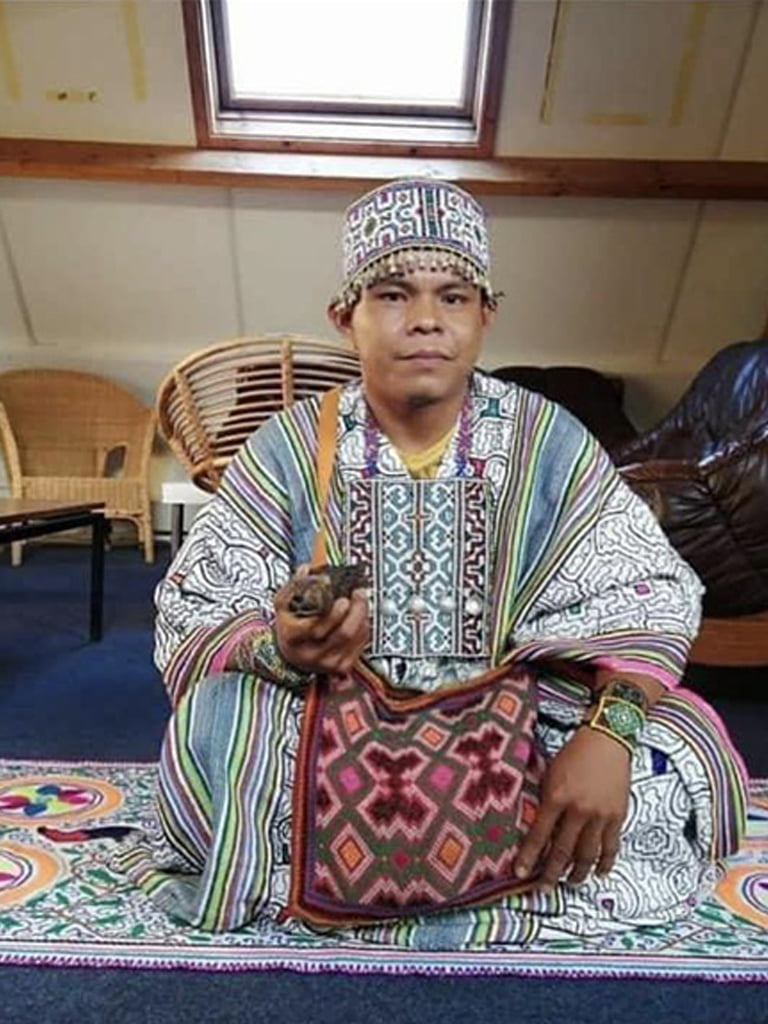Discover the transformative power of Ayahuasca and Shamanism in our comprehensive guide. Explore the ancient rituals, therapeutic benefits, and spiritual evolution awaiting those who embark on this enlightening journey.
Introduction to Ayahuasca and Shamanism
What is Ayahuasca? Ayahuasca, often referred to as “the vine of the soul” or “the spirit vine,” is a sacred plant medicine used for centuries by indigenous Amazonian cultures in spiritual and healing ceremonies. It is a psychoactive brew typically made from the Banisteriopsis caapi vine and the leaves of the Psychotria viridis shrub, although variations exist. Ayahuasca contains DMT (N, N-Dimethyltryptamine), a potent psychedelic compound known for inducing profoundly altered states of consciousness.
Understanding Shamanism Shamanism is a spiritual practice and belief system found in cultures worldwide, characterized by practitioners known as shamans who interact with the spirit world on behalf of their community. Shamanic traditions often involve healing, divination, and communication with ancestors and nature spirits. Shamans use various techniques such as trance states, ceremonial practices, and plant medicines like Ayahuasca to facilitate healing and spiritual growth. Learn more.
Historical and Cultural Significance The use of Ayahuasca and shamanism dates back thousands of years in indigenous Amazonian cultures, which have been integral to their spiritual and cultural heritage. These practices are deeply intertwined with the natural environment, folklore, and cosmology of Amazonian peoples. In recent decades, interest in Ayahuasca and shamanism has spread globally, attracting seekers from diverse backgrounds seeking healing, personal growth, and spiritual awakening.
The Science Behind Ayahuasca
Chemical Composition Ayahuasca contains a combination of psychoactive compounds, primarily DMT and harmala alkaloids such as harmine and harmaline. The DMT in Ayahuasca is typically inactive when ingested orally due to the presence of monoamine oxidase inhibitors (MAOIs) from the Banisteriopsis caapi vine, allowing it to be absorbed and exert its psychoactive effects when consumed as a brew.
Neurological Effects Ayahuasca induces altered states of consciousness characterized by vivid visions, introspection, and emotional release. Research suggests that It affects various neurotransmitter systems in the brain, including serotonin, dopamine, and glutamate, leading to profound changes in perception, mood, and cognition. These effects vary widely among individuals and depend on dosage and setting.
Medical and Therapeutic Potential Recent studies have shown promising results regarding the therapeutic potential of Ayahuasca in treating various mental health conditions, including depression, anxiety, PTSD, and substance abuse disorders. Ayahuasca-assisted therapy has been associated with improvements in mood, well-being, and quality of life. However, further research is needed to understand its mechanisms of action and long-term effects fully.
Shamanic Practices: Ancient Wisdom in Modern Times
Role of the Shaman In the realm of shamanic practices, the Shaman holds a revered position as a conduit between the physical and spiritual worlds. Their role encompasses various responsibilities, serving as healers, guides, and keepers of ancient wisdom. Here are critical aspects of the Shaman’s role:
- Spiritual Healer: Shamans are adept at diagnosing and treating spiritual ailments, often using traditional herbs, rituals, and ceremonies to restore balance and harmony within individuals and communities.
- Intermediary with the Spirit World: Through trance-like states induced by chanting, drumming, or entheogenic substances, shamans communicate with spirits to gain insights, guidance, and healing powers.
- Community Leader: Shamans play a crucial role in community cohesion, offering counsel, resolving conflicts, and leading ceremonies that mark significant life events such as births, deaths, and rites of passage.
- Cultural Preserver: As guardians of ancestral knowledge and traditions, shamans pass down oral histories, myths, and rituals, ensuring the continuity of cultural heritage across generations.
Rituals and Ceremonies Shamanic rituals and ceremonies serve as profound portals to spiritual realms, facilitating healing, transformation, and communion with the divine. Rooted in ancient traditions, these practices vary across cultures but share common elements:
- Sacred Space Creation: Rituals often begin with creating a sacred space, purified through smudging, chanting, or other ceremonial acts to invite benevolent spirits and energies.
- Invocation of Spirits: Shamans invoke spirits of nature, ancestors, and divine entities to seek their blessings, guidance, and assistance in healing and ceremony.
- Power Objects and Tools: Ritual objects such as drums, rattles, feathers, and crystals amplify spiritual energy, facilitate trance states, and invoke the presence of spirits.
- Ceremonial Offerings: Food, herbs, tobacco, or other symbolic items are offered to spirits as gestures of gratitude, reciprocity, and reverence.
- Healing Modalities: Rituals may include energy work, soul retrieval, or symbolic acts aimed at clearing energetic blockages, restoring harmony, and promoting spiritual well-being.
Healing and Spiritual Guidance At the core of shamanic practices lies the profound belief in the interconnectedness of all beings and the power of spiritual intervention to heal and transform. Here’s how shamanic healing and spiritual guidance unfold:
- Holistic Healing: Shamans view illness and suffering as manifestations of spiritual imbalance, addressing not only physical symptoms but also emotional, mental, and spiritual aspects of the individual.
- Soul Work: Through soul retrieval, extraction, and other techniques, shamans restore wholeness by retrieving lost soul parts, removing energetic intrusions, and facilitating spiritual integration.
- Divine Insight: Shamans serve as conduits for heavenly wisdom, offering insights, revelations, and prophetic guidance to individuals seeking clarity, direction, and purpose.
- Empowerment and Transformation: Shamanic practices empower individuals to reclaim their innate power, release limiting beliefs, and embark on transformative journeys of self-discovery and spiritual growth.
- Community Support: Within communal ceremonies, shamans foster a sense of belonging, unity, and collective healing, strengthening the bonds of kinship and shared purpose. Learn more.

Ayahuasca Tourism: Opportunities and Challenges
Rise in Popularity Ayahuasca tourism has witnessed a remarkable surge in popularity in recent years, driven by increasing interest in alternative healing modalities, spiritual exploration, and personal transformation. Key factors contributing to this rise include:
- Global Awareness: Growing media coverage, documentaries, and testimonials have raised awareness about the therapeutic potential and profound spiritual experiences facilitated by Ayahuasca.
- Accessibility: Ayahuasca retreats and ceremonies have become more accessible to international travelers, with a proliferation of retreat centers and facilitators offering immersive experiences in traditional and contemporary settings.
- Endorsement by Celebrities and Influencers: Public endorsements by celebrities and influencers have contributed to the mainstream acceptance of Ayahuasca as a tool for personal growth, healing, and consciousness expansion.
- Integration with Wellness Tourism: Ayahuasca retreats often combine traditional shamanic practices with elements of wellness tourism, offering holistic experiences that cater to the mind, body, and spirit.
Ethical Considerations Despite its growing popularity, ayahuasca tourism raises ethical concerns that warrant careful consideration and responsible stewardship. Vital ethical considerations include:
- Cultural Appropriation: The commercialization of ayahuasca ceremonies and rituals without proper respect for indigenous traditions risks perpetuating cultural appropriation and exploitation of indigenous cultures.
- Informed Consent: Participants must be fully informed about the potential risks, benefits, and psychological implications of ayahuasca use, ensuring that consent is obtained transparently and ethically.
- Safety and Duty of Care: Retreat centers have a responsibility to prioritize participant safety, providing adequate medical supervision, psychological support, and integration services to mitigate potential risks and adverse effects.
- Sustainability: The unsustainable harvest of ayahuasca vine and other medicinal plants poses ecological threats to the Amazon rainforest and indigenous communities dependent on these resources, necessitating sustainable harvesting practices and conservation efforts.
Sustainable Practices To ensure the long-term sustainability and integrity of ayahuasca traditions, responsible practices must be adopted by retreat centers, facilitators, and participants alike. Critical components of sustainable ayahuasca tourism include:
- Cultural Respect and Collaboration: Collaborating with indigenous communities and traditional healers ensures that ayahuasca ceremonies are conducted with respect for cultural protocols, knowledge, and traditions.
- Environmental Stewardship: Adopting sustainable harvesting practices, supporting reforestation efforts, and minimizing ecological impact through eco-friendly infrastructure and operations contribute to preserving biodiversity and ecosystems.
- Community Engagement: Investing in local communities through fair wages, cultural exchange programs, and community development initiatives fosters mutual respect, reciprocity, and socio-economic empowerment.
- Education and Advocacy: Promoting awareness about the cultural, ecological, and ethical dimensions of ayahuasca tourism empowers participants to make informed choices and advocate for responsible practices within the industry.
Personal Experiences and Testimonials
Transformational Journeys
Embark on a profound exploration of Ayahuasca and Shamanism, where individuals undergo remarkable transformational journeys. Here, the Ayahuasca experience catalyzes inner growth and self-discovery, leading to profound shifts in perception and consciousness. Through the ritualistic consumption of Ayahuasca brew under the guidance of experienced shamans, participants often undergo intense introspection, confronting unresolved emotions, traumas, and deep-seated patterns. These transformative journeys are marked by cathartic releases, spiritual insights, and a profound connection to oneself, others, and the universe.
- The cathartic release of emotional burdens
- Spiritual insights and revelations
- Enhanced self-awareness and clarity
Insights and Reflections
Delve into the profound insights and reflections from the Ayahuasca and Shamanism experience. During their journeys, participants often recount encountering profound wisdom, ancestral knowledge, and cosmic revelations. These insights transcend the boundaries of ordinary perception, offering profound clarity on existential questions, life purpose, and interconnectedness. Through deep introspection facilitated by the Ayahuasca ceremony, individuals gain invaluable perspectives on their lives, relationships, and the nature of reality.
- Cosmic revelations and ancestral wisdom
- Clarity on life purpose and direction
- Insights into interconnectedness and unity
Precautions and Considerations
Navigating the realms of Ayahuasca and Shamanism requires careful consideration and respect for the potency of the experience. While transformative and illuminating, the Ayahuasca journey can also be intense and challenging, demanding mental, emotional, and physical preparation. Participants must approach the experience with humility, reverence, and a willingness to surrender to the process. Precautions such as thorough medical screenings, adherence to dietary guidelines, and selecting reputable retreat centers with experienced shamans are paramount to ensuring safety and maximizing the benefits of the experience.
- Importance of mental, emotional, and physical preparation
- Safety precautions and medical screenings
- Selecting reputable retreat centers and experienced shamans
Integrating Ayahuasca and Shamanism into Daily Life
Integration Techniques
Integrating the profound insights and transformative experiences gained from Ayahuasca and Shamanism into daily life is essential for sustained growth and evolution. Integration techniques encompass various practices to anchor the wisdom gleaned from the ceremonial experience into everyday existence. This may include mindfulness practices, journaling, meditation, and engaging in creative expression to process and integrate the insights gained. Individuals can seamlessly weave the lessons learned into their personal and professional lives by cultivating a conscious and intentional approach to integration, fostering lasting positive change and spiritual evolution.
- Mindfulness practices for grounding and integration
- Journaling and reflection on insights gained
- Creative expression as a means of processing and integrating experiences
Continued Spiritual Growth
The journey with Ayahuasca and Shamanism extends beyond the confines of the ceremonial space, continuing to unfold in the ongoing pursuit of spiritual growth and self-realization. Continued spiritual growth involves a commitment to self-exploration, inner work, and cultivating practices that nourish the soul. This may entail ongoing participation in ceremonial work, engagement with spiritual communities, and the pursuit of modalities that support holistic well-being. By nurturing a dedicated spiritual practice and remaining open to the guidance of higher consciousness, individuals can continue to deepen their connection to themselves, the divine, and the interconnected web of existence.
- Commitment to ongoing self-exploration and inner work
- Engagement with spiritual communities and mentors
- Pursuit of holistic modalities for well-being and growth
Community Support and Resources
Navigating the path of Ayahuasca and Shamanism is greatly enhanced by the support of a like-minded community and access to valuable resources. Community support provides a sense of belonging, understanding, and camaraderie on the spiritual journey, fostering a supportive environment for growth and healing. Whether through participation in integration circles, online forums, or retreats, connecting with others who share similar experiences can offer validation, insight, and encouragement. Additionally, access to reputable resources such as books, documentaries, and educational materials can deepen understanding and provide valuable guidance on the path of Ayahuasca and Shamanism.
- Importance of community support for validation and growth
- Participation in integration circles and retreats
- Accessing reputable resources for education and guidance

Final words: Navigating the Path of Ayahuasca and Shamanism
Summary of Key Learnings
- Understanding the profound connection between Ayahuasca and Shamanism
- Appreciating the historical and cultural significance of these ancient practices
- Recognizing the therapeutic potential of Ayahuasca in modern medicine
- Grasping the role of the Shaman as a spiritual guide and healer
- Reflecting on personal insights gained from Ayahuasca experiences
- Acknowledging the importance of integration and ongoing spiritual growth
Encouragement for Further Exploration
- Emphasizing the transformative nature of Ayahuasca journeys
- Encouraging individuals to seek reputable and ethical retreats or ceremonies
- Suggesting continued exploration through research, literature, and community involvement
- Highlighting the potential for more profound self-discovery and healing
- Motivating individuals to approach Ayahuasca and Shamanism with respect and reverence
- Providing resources for those interested in further exploration, such as books, documentaries, and reputable retreat centers
Closing Thoughts on Spiritual Evolution
- Reflecting on the evolution of consciousness through spiritual practices
- Recognizing Ayahuasca and Shamanism as tools for personal and collective awakening
- Embracing the journey of spiritual evolution as a lifelong process
- Encouraging integration of spiritual experiences into daily life for holistic growth
- Inspiring a sense of interconnectedness and unity with all living beings
- Expressing gratitude for the opportunity to embark on the path of Ayahuasca and Shamanism



